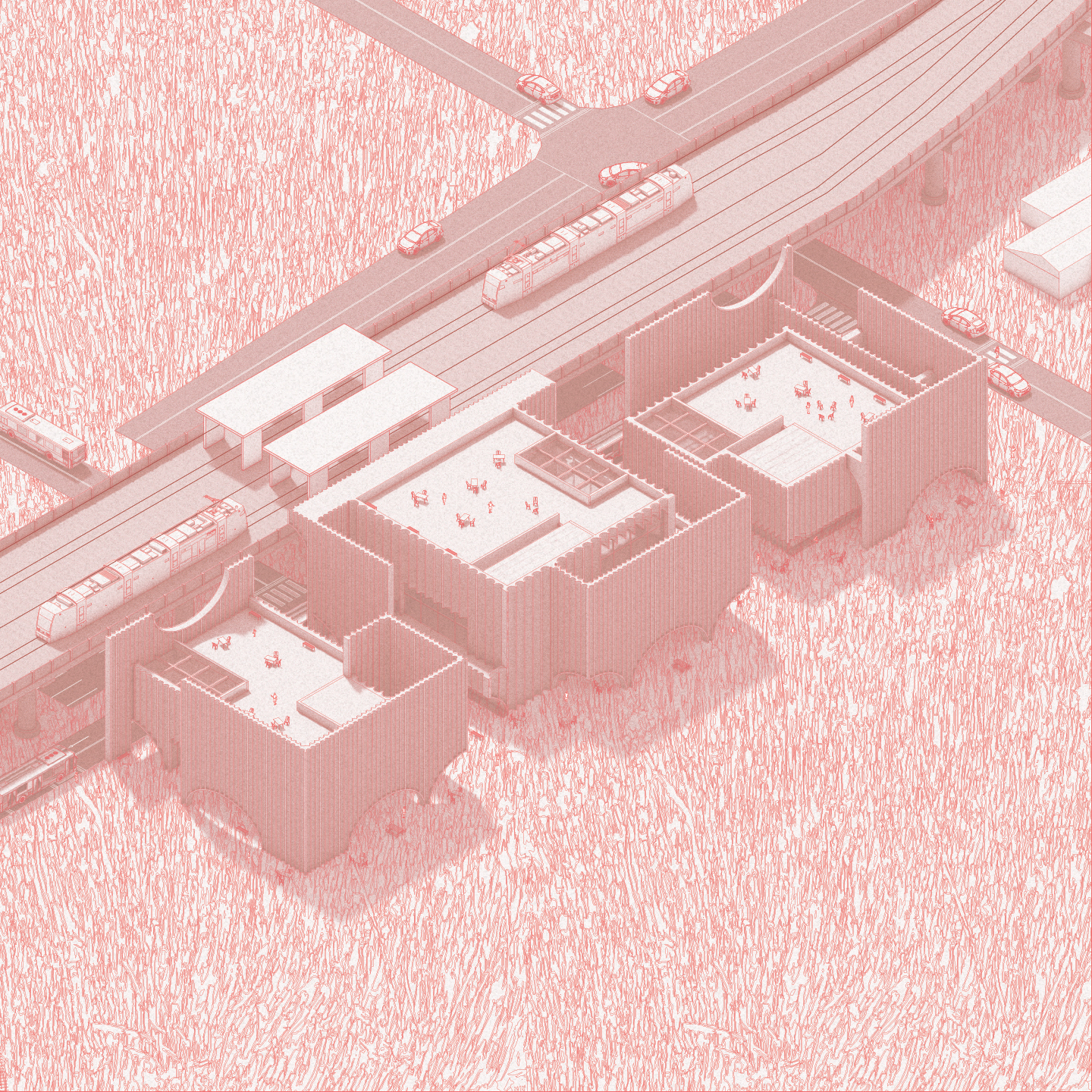Share This!
August—November 2020
Text. Research diagrams. Site plan. Ground plan. Sections. Exterior renderings.
Roof axonometric.
Spreadsheet. Room type matrix. Cluster drawings. Public buildings drawings.
Site diagrams.
Scenario axonometrics.
Interior renderings.
Housing for care-workers in the Texas Medical Center, Houston, TX, USA. Taught by Brittany Utting for ARCH 401. With Natalia Koziel and Emma Brown.

Care appears in innumerable ways, far beyond the context of medical practice. It is ingrained in the very foundation of housing, and deeply predicated on contexts of proximity, visibility, temporality, and empathy. Addressing care spatially not only means acknowledging the various specificities of those who would occupy the space, but also producing a space that is worth caring for.
This housing proposal is in many ways a rejection of the uncomfortable, corporate aesthetic of the Texas Medical Center. Instead, a low-rise, high density neighborhood of housing clusters covers the site organizing units on a principle of overlap and sharing. Four broad programs of living intersect with levels of privacy to produce new modes of living: rest, leisure, domestic labor, and a flexible outdoor space. Each cluster does not compromise on a good quality of living; it asserts that models of co-living and housing are not mutually exclusive from feelings of personal ownership, from having light or spacious rooms. Nine cluster types varying in their levels of sharing are scattered across the site within a grid of paths. Four public centers of care occupy the same grid and are each paired with a large open plaza. These community buildings consist of activities of self-care, family care, wellness care, and social care.
Large pitched roofs with wide overhangs top each cluster and public building, unifying the site and producing a system of covered pedestrian paths. The paths are interrupted by a system of courtyards produced by cuts into the clusters and demarcated by low walls and vivid blue tiles. These same tiles line the care buildings and signal public space.
Housing is not synonymous with a paralyzing bigness. At the core of the project is a desire to delineate smaller localized communities of a few units within each cluster, focusing on the unique relationship each unit has with those surrounding it. The result is a more nuanced understanding of ownership and responsibility that ultimately form a tighter communal bond.
 Spine morphology of the TMC diagrammed.
Spine morphology of the TMC diagrammed.
 Transit paths in the TMC.
Transit paths in the TMC. Footprints diagrammed of building stock, green spaces, and parking.
Footprints diagrammed of building stock, green spaces, and parking. Site plan.
Site plan. Ground plan.
Ground plan.







Exterior renderings.

Roof axonometric, showing structural tectonics.
 Room type matrix, organized by program categories.
Room type matrix, organized by program categories.












 Cluster types organized on site, producing interstitial courtyards.
Cluster types organized on site, producing interstitial courtyards.
Public courtyards highlighted.
 Hypothetical layout of unit 9B.
Hypothetical layout of unit 9B.  Hypothetical layout of unit 8C.
Hypothetical layout of unit 8C.
 Hypothetical layout of unit 1A.
Hypothetical layout of unit 1A.


 Interior renderings of potential domestic habitation.
Interior renderings of potential domestic habitation.


